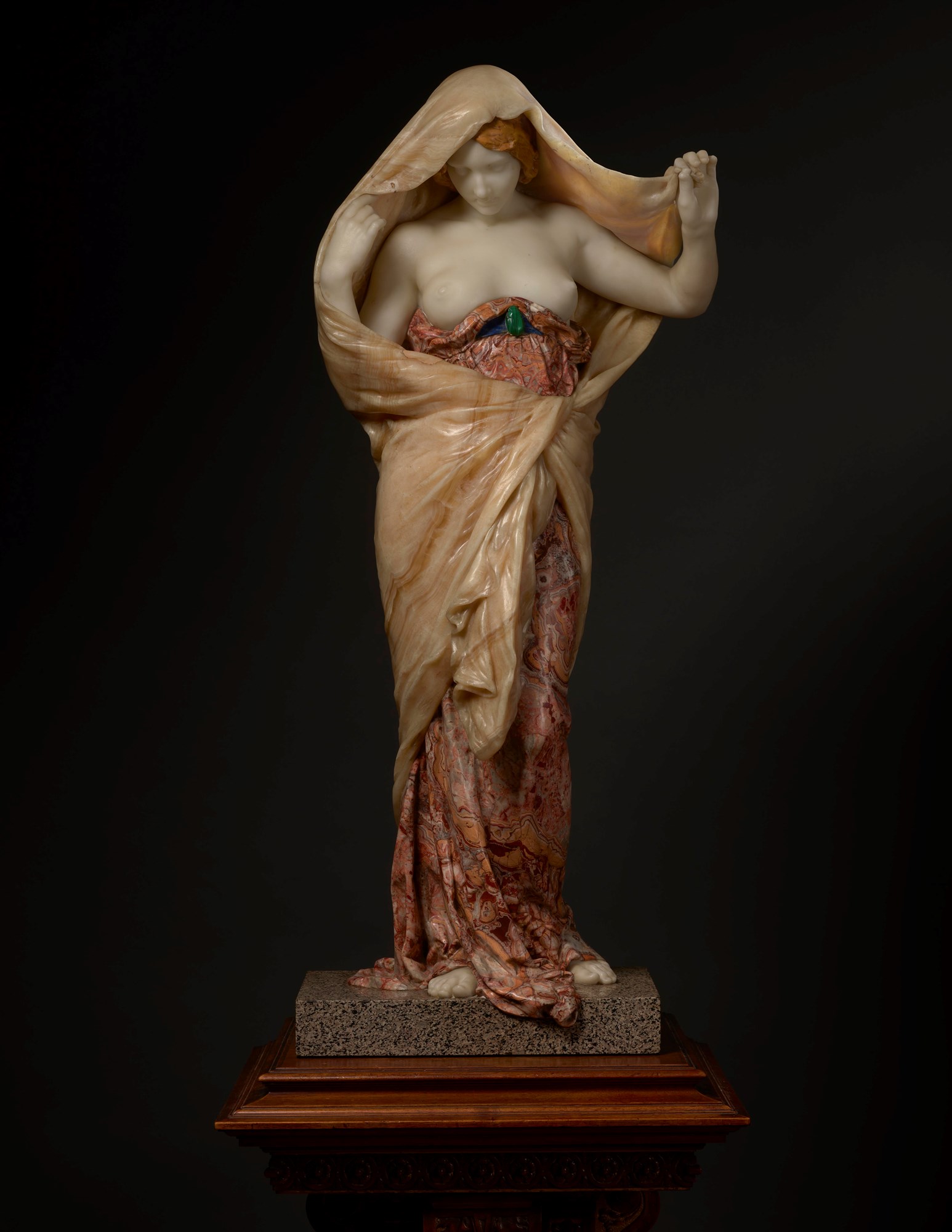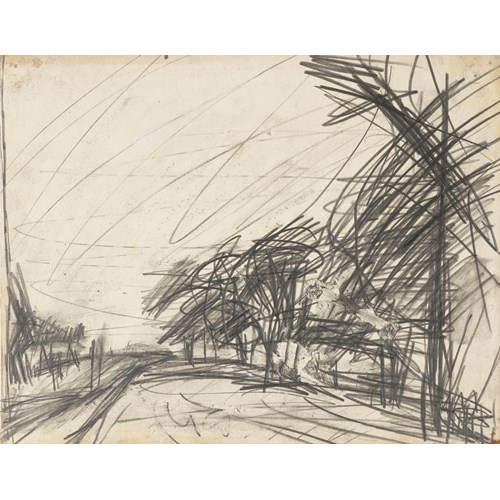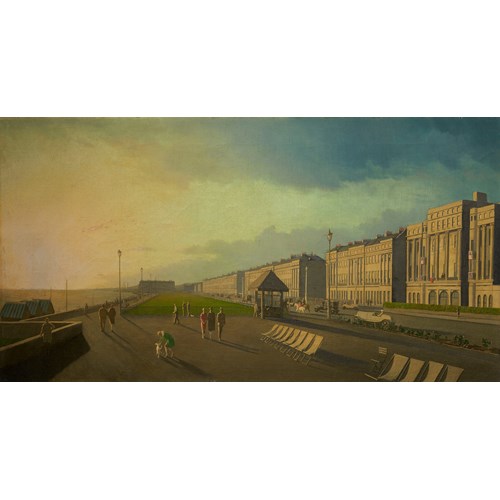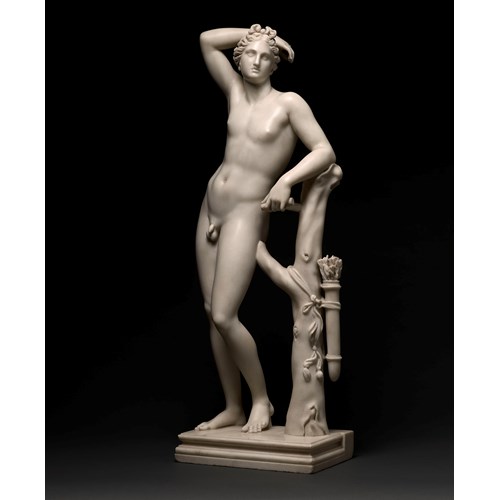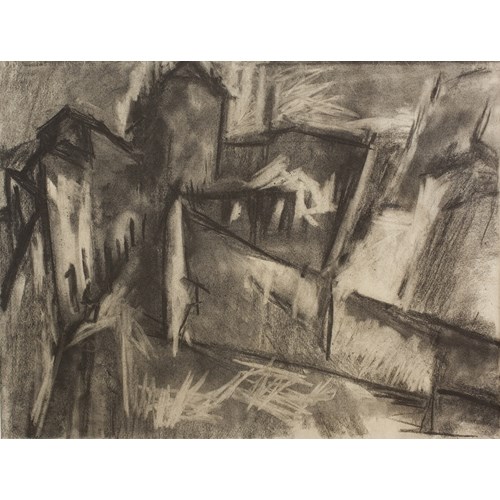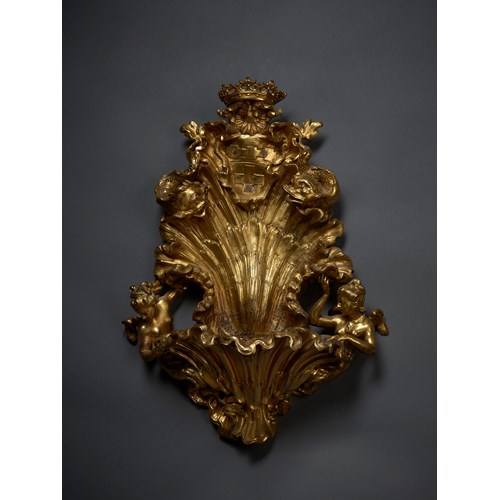Louis-Ernest Barrias
Nature Unveiling Herself
Date 1903
Medium White and Algerian marbles, polychrome onyx, grey granite, malachite and lapis lazuli
Dimension 102 cm (40¹/₈ inches)
It was executed by Barrias in 1903 for one of the three Watel brothers, who were wealthy businessmen and bankers established in Paris. Etienne (d.1909), president of the board of directors of the Upper Unbangi Sultanates and co-owner of the Château de Ménars (Loir-et-Cher) which belonged to the Marquis de Marigny, along with his brother Maurice Watel and Albert Watel-Dehaynin. The three of them were the sons of Louis Watel, a building contractor, banker and the administrator of Montechino’s Petroleum in Italy.
Nature unveiling herself belongs to a large movement of rediscovery of polychrome sculpture in Europe following archaeological findings in the 19th century and championed fifty years earlier by the French sculptor, Charles Cordier (1827-1905). The present work depicts a young woman, the allegory of Nature, unveiling herself in a gentle motion; the veils which envelop her are parted to reveal her downturned gaze and bare breasts. Barrias carefully chose the materials to suit their function with great care. The choice of alabaster and onyx from rediscovered Algerian mines, effortlessly render her drapery in elegant folds without appearing cumbersome. In particular, the light diffuses and glows beautifully through her head veil. The white marble used for her skin exemplifies her purity, evoking an almost angelic quality. Barrias evidently carved the elements of his sculpture by carefully selecting his materials. The preciousness of the lapis lazuli ribbon and malachite scarab brooch for her belt exude richness and sophistication. Indeed, the present sculpture was met with great success and acclaim from critics and public:
“This fortunate style was found again by Barrias with ‘Nature Unveiling Herself’, one of his latest creations […] the gesture is of such spontaneity, of such truth, that seduce at first sight. It is not, or so we are under the impression at least, like for all satisfying works of art where the creative effort is never visible – it is not the result of long quests, of uneasy trial and error in the workshop, in front of the planche à modèle, but the fruit of some fortunate encounter, of some providential contact, in the middle of life; one of these favourable fates that give birth to masterpieces when they reveal themselves to genius”.
In 1889, Barrias received his first commission from the French State for Nature unveling herself which he executed in white marble to adorn the new Faculty of Medicine in Bordeaux. Following the success of this model, he created the larger polychrome version of the present work which resides in the Musée d’Orsay, Paris, also commissioned by the French state in 1895, and completed in 1899. Originally destined to adorn the main staircase of the Conservatoire des Arts et Métiers in Paris, the work was finally displayed in the Luxembourg Museum on April 4, 1903 – the same year Barrias executed the present sculpture for monsieur Watel. Indeed, it is entirely possible monsieur Watel saw this example in Luxembourg and was greatly impressed by it, subsequently commissioning a one-meter-high version.
Date: 1903
Medium: White and Algerian marbles, polychrome onyx, grey granite, malachite and lapis lazuli
Signature: Signed 'E. BARRIAS' to the base
Dimension: 102 cm (40¹/₈ inches)
Provenance: Commissioned by the French banker, Monsieur Watel in Paris, 1903.
Art Market, France, to 2024
Acquired from the above.
Literature: Georges Lafenestre, L’oeuvre de Ernest Barrias, Paris, 1908, p. 105, cat. n° 41.
Albert Soubies, E. Barrias, 1841-1905, Notes biographiques, Paris, 1905, p. 16.
Plus d'œuvres d'art de la Galerie


